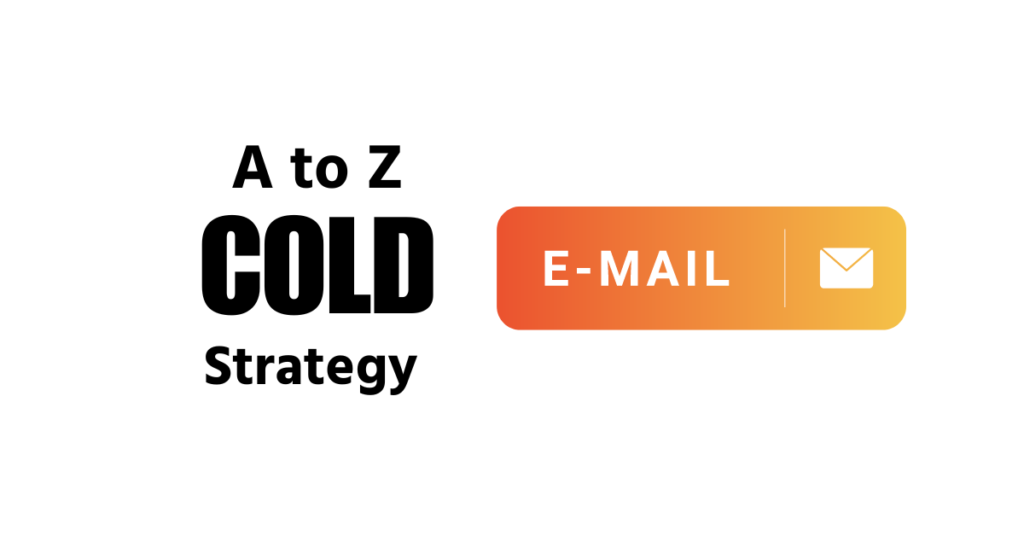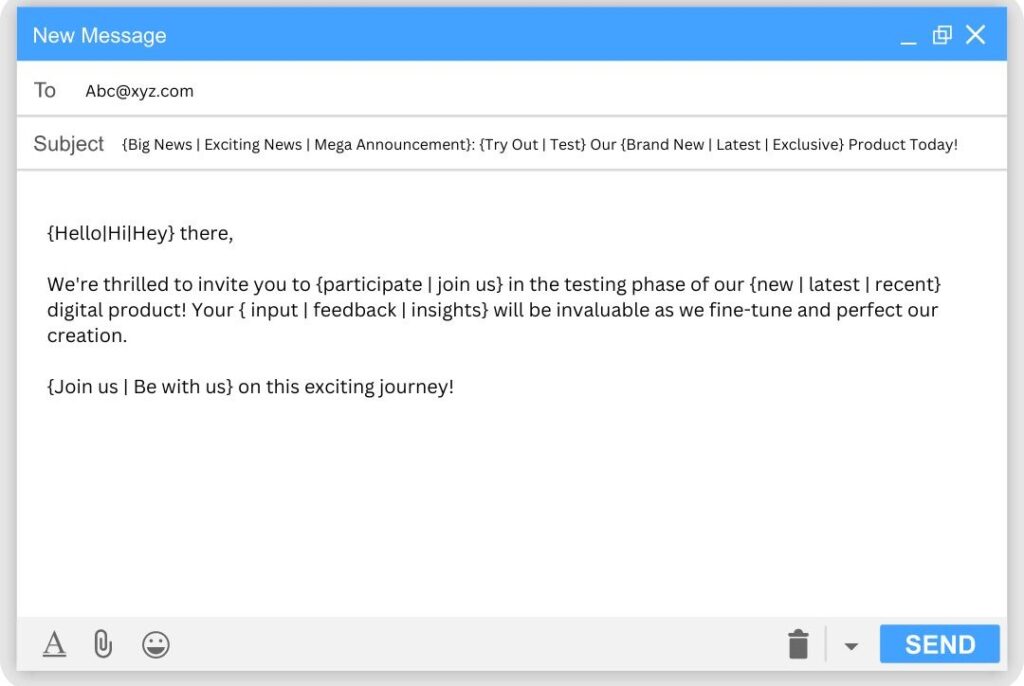(Your step by step guide to building cold email campaigns that actually get replies)
You ever have that moment where you think, “If only I could just get in front of the right person, they’d totally want what I’m offering”?
Yeah… that’s basically the entire reason cold email exists.
Cold email is like knocking on someone’s door, except instead of showing up unannounced at their house (awkward), you’re sliding into their inbox with something relevant, respectful, and worth their time.
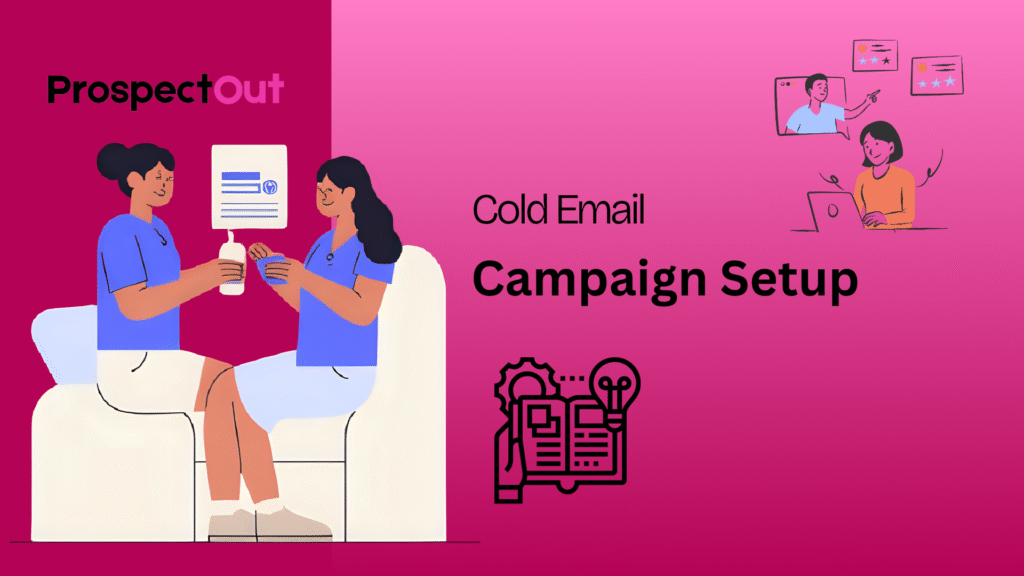
Done right, it can get you meetings, deals, partnerships, collaborations, or even PR opportunities. Done wrong, well… you end up in spam faster than you can say “unsubscribe.”
In this guide, we walk you through everything from A to Z domain setup, list building, writing emails, sequencing, testing, legal details, and even a few pro tips that most guides skip. And I’m going to keep this chatty, like we’re sitting across from each other in a café and I’m sketching it out on a napkin.
Cold Email Campaign Setup Strategy
Define Your Goal & Audience
Alright, first things first, before you touch any tools or write a single word, you need to know what you want and who you’re talking to.
Your goal can’t be “more business.” That’s vague. Instead:
- Book 15 sales calls a month
- Get 10 guest podcast spots
- Land 5 backlink opportunities from high authority sites
Once you’ve got that nailed down, figure out who can make that happen. That’s your Ideal Customer Profile (ICP).
Ask yourself:
- What job title do they have? (CEO, Marketing Director, HR Manager?)
- What industry?
- How big is their company?
- Where are they located?
- What’s their main pain point you can solve?
Pro tip: Don’t just stop at “CMO at SaaS companies.” Dig deeper. Maybe it’s “CMO at B2B SaaS companies in the $5–$50M range, who are actively launching new products”. That’s a much sharper dart to throw.
Infrastructure Setup: Domains, ESP & Deliverability
This is the tedious yet critical aspect of being a cold email agency. The plumbing that keeps your emails from going straight to spam.
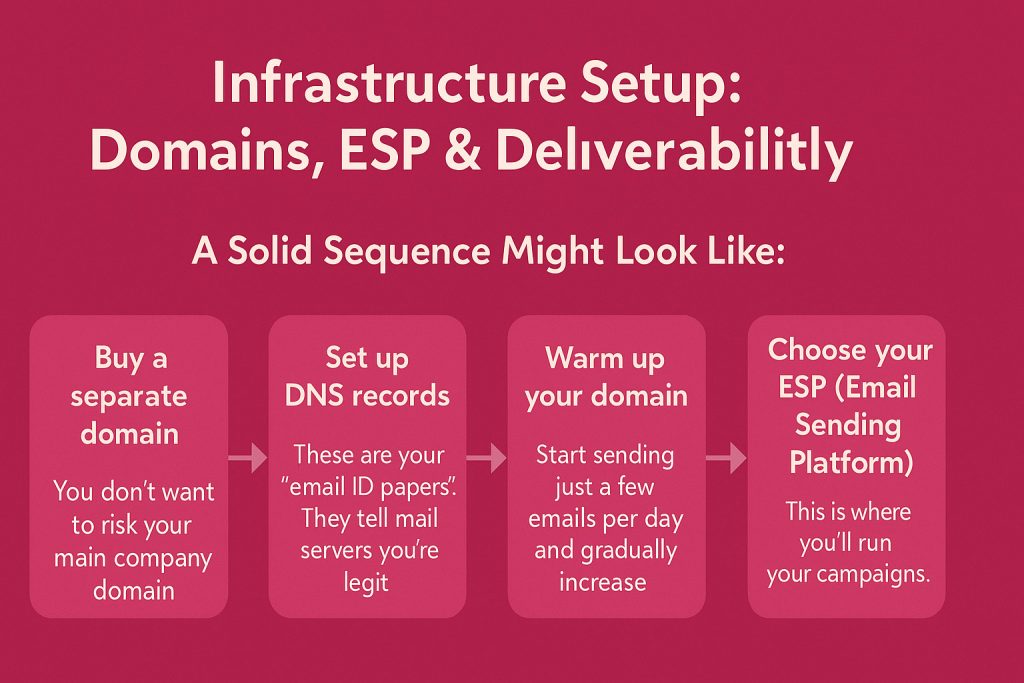
Buy a separate domain
You don’t want to risk your main company domain. If you’re at awesomeagency.com, consider grabbing something like awesome-team.com or awesome-co.com.
Set up DNS records
These are your “email ID papers”. They tell mail servers you’re legit:
- SPF — says “these are the servers allowed to send email for my domain.”
- DKIM — puts a cryptographic signature on your email.
- DMARC — tells servers what to do if something fails SPF or DKIM.
Warm up your domain
Start sending just a few emails per day (to safe, friendly inboxes) and gradually increase. Do this for 2–3 weeks before going full blast. Tools like Instantly, Warmup Inbox, or Lemwarm can automate this.
Choose your ESP (Email Sending Platform)
This is where you’ll run your campaigns. Some solid options:
- Instantly — super easy and unlimited sending plans without being stuck on the spam filter.
- Woodpecker — great deliverability focus.
- GMass — works right inside Gmail.
- Outreach.io or Salesloft — more enterprise level.
Build & Verify Your Prospect List
Okay, here’s where the fun starts: finding the right people.
Where to find prospects:
- LinkedIn Sales Navigator — filter by job title, company size, industry.
- Apollo.io — giant database with verified emails.
- Crunchbase — great for funded startups.
- Manual research — sometimes the gold is hidden in niche directories.
Verify every email
Bounces kill your sender reputation. Always run emails through a verifier like:
- NeverBounce
- ZeroBounce
- Bouncer
Crafting High Converting Cold Emails
Here’s the golden rule: It’s not about you. It’s about them.
Subject lines that get opened
Keep it short (1–8 words), personal, and curiosity driven. Examples:
- Quick question, Sarah
- Loved your article on remote teams
- Idea for {CompanyName}
Your opening line matters more than you think
Don’t start with “I hope this email finds you well.” Please. Everyone skips that.
Instead:
- Reference something specific (“Noticed you’re expanding into Canada…”)
- Give a compliment (“Your post on AI hiring trends was spot on…”)
Body structure
- Personal opener
- Pain point they care about
- How have you’ve helped similar people
- Clear, low-friction CTA
Example Cold Email (Annotated)
Subject: Quick idea for {CompanyName}
Hi {FirstName},
Noticed {CompanyName} recently [specific event/news]. Congrats on that — big move.
I work with [similar companies] to help them [main benefit], without [main pain]. For example, we helped [ClientName] boost [metric] by [result] in just [timeframe].
Would it make sense to share a 2 minute overview next week? If not, no worries. Just thought it might be useful.
Best,
[Your Name]
Why this works:
- Subject is personal and intriguing.
- Opener proves you did your homework.
- The “without [pain]” structure is powerful.
- CTA is light — just a quick overview, not a huge ask.
Sequence Strategy & Follow Ups
One email isn’t enough. People are busy, inboxes are chaotic.
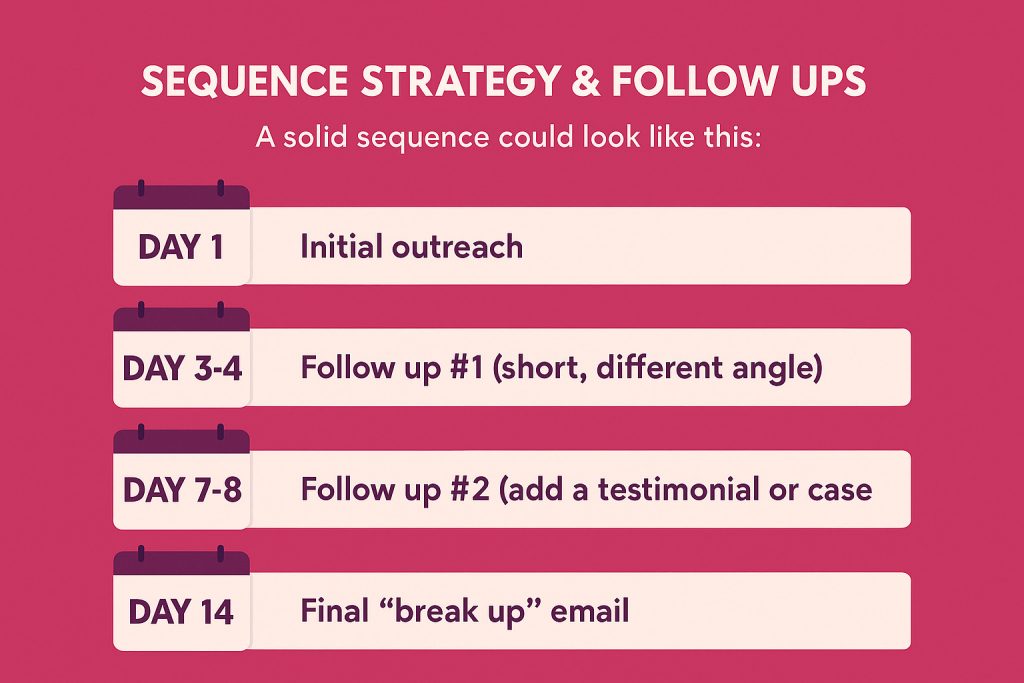
A solid sequence could look like this:
- Day 1 — Initial outreach
- Day 3–4 — Follow up #1 (short, different angle)
- Day 7–8 — Follow up #2 (add a testimonial or case study)
- Day 14 — Final “break up” email
Example Follow Up Email
Subject: Re: Quick idea for {CompanyName}
Hi {FirstName},
Just wanted to check if you saw my note last week about helping {CompanyName} [benefit].
Here’s a quick example of results we got for [similar company]: [1 sentence case study].
If you’d like, I can share the short breakdown — no slides, no sales pitch.
Best,
[Your Name]
Test, Track & Optimize
Once your campaign is running, keep a close eye on your numbers.
Key metrics to track:
- Open rate — tells you if your subject line & deliverability are working.
- Reply rate — shows if your offer resonates.
- Positive reply rate — because not all replies are good ones.
- Conversion rate — meetings or deals from those replies.
Only test one thing at a time — subject line, CTA, or opener.
Legal, Ethical & Best Practices
Don’t be that spammer.
- Always include an unsubscribe link or clear opt out.
- Identify yourself and your company.
- Follow local laws (CAN SPAM, GDPR, and your country’s rules).
- No misleading subject lines.
You need to act humanely and know how to handle negative responses.
Supercharge With Unique Insights
Here’s where you can stand out from the cookie cutter advice.
AI personalization workflow:
Prompt example:
“Write a 2 sentence cold email opener for {FirstName}, CEO of {CompanyName}, referencing their recent {event/news} and connecting it to {pain point} in a friendly, conversational tone.”
Paste this into ChatGPT with your prospect’s details, and boom. Personalized openers in seconds.
Regional timing optimization:
If you’re targeting the US East Coast, send 8–9 AM EST.
If you’re hitting Europe, 8–10 AM CET.
Asia? Early afternoon their time works surprisingly well.
Mini case study:
We ran two identical campaigns. One blasts everyone at 9 AM in our time zone, while the other schedules according to the recipient’s time zone. The time zone optimized campaign got 34% more replies.
Conclusion
Cold email works. But only if you respect the process.
Set up your tech right, know exactly who you’re targeting, write like a human (not a robot), follow up without being annoying, and keep tweaking based on real data.
If you do all that, you’re not just “sending emails”. You’re building conversations that actually lead to business.

